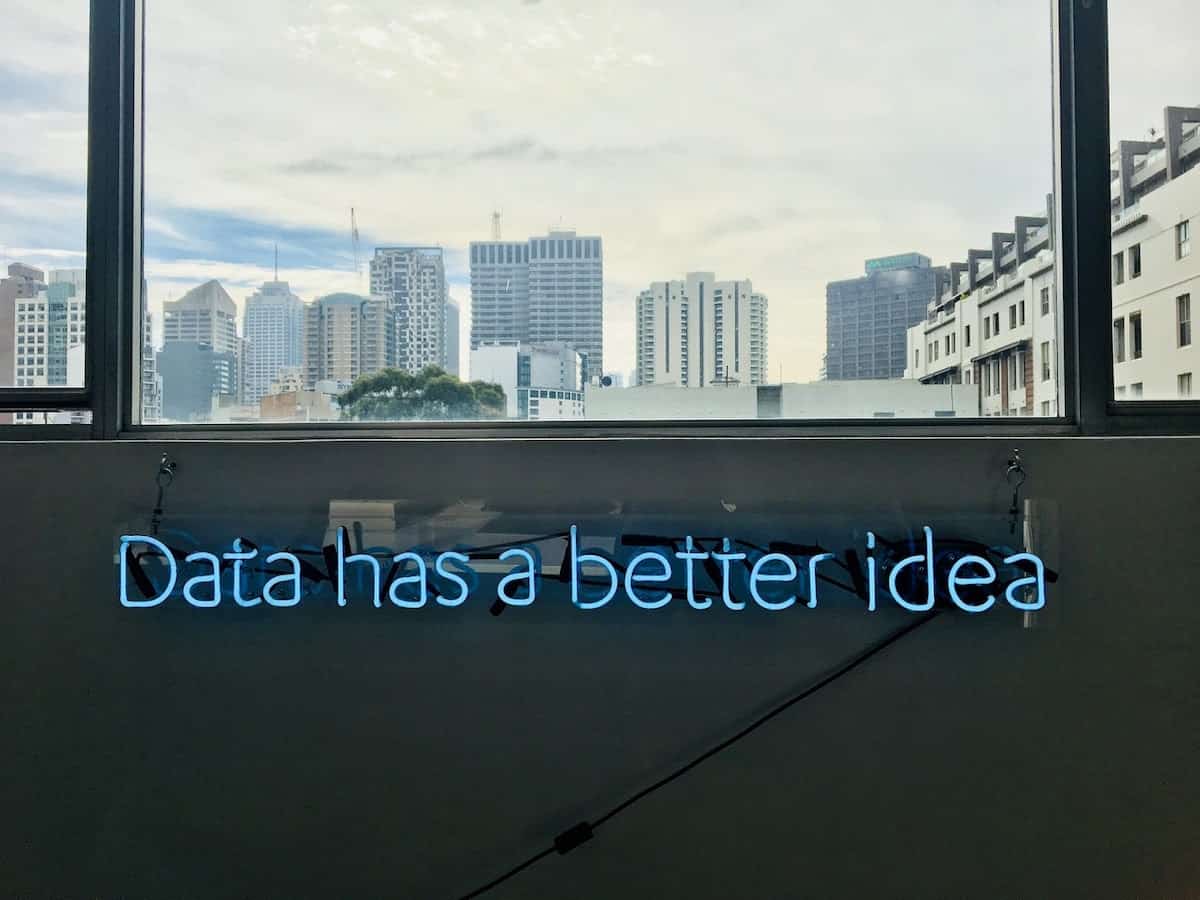
What’s the Difference Between Data Analytics and Data Science?
When it comes to data analytics vs data science, it can be pretty easy to get confused. People often mistakenly use the terms “data analyst” and “data scientist” interchangeably. If numbers and figures intrigue you, a career path either in data analytics or data science could be a good choice for you.
If you’re considering a job working with data or statistical analysis, but don’t know which field to choose, let this guide help you. Learn about both data science and data analytics, how they differ, and actionable insights into the steps you can take to enter either field.
What Is Data Analytics?
Data analytics is the process of inspecting datasets to draw conclusions or valuable information contained within to support business decisions. This process involves cleaning, transforming, performing exploratory data analysis, and modeling datasets. The person performing data analytics is called a data analyst.
What Does a Data Analyst Do?
A data analyst critically observes datasets to identify patterns to draw actionable insights. They use data visualization tools, such as charts and graphs, to explain key data insights to clients better. A data analyst should have excellent communication skills besides statistical knowledge. A data analyst may advance to a data scientist position, as they don’t have as strong technical skills as data scientists.
What Is Data Science?
Data science is the field of study that encompasses scientific methods, algorithms, and systems to retrieve valued knowledge and insights from structured and unstructured data. The extracted information is then applied to a wide range of application domains.
What Does a Data Scientist Do?
A data scientist extracts, cleans, and analyzes data to build predictive and statistical models and algorithms. A data scientist primarily uses predictive models, algorithms, custom analysis, and prototypes to construct and design new data modeling and machine learning processes. They also analyze models to draw meaningful insights.
Data scientists employ their hacking skills to create new ways of data derivation. They use different machine learning techniques to train these data for predictive modeling. Data scientists also perform database management, and they may fill data analytics roles.
Key Differences Between Data Analytics and Data Science
The table below highlights the critical difference between data science and data analytics.
| Data Science | Data Analytics |
|---|---|
| Predictive Analytics – Data scientists perform predictive analysis on datasets for machine learning purposes. | Static Modeling – Data analysts perform static modeling for quick data overview. |
| Advanced Statistics – Data scientists perform advanced statistical analysis to gain deep insights into large datasets. | Intermediate Statistics – Data analysts perform intermediate statistical analysis on market data to help businesses make informed decisions. |
| Data Modeling – Data scientists perform data modeling on trained datasets for application building. | Business Intelligence Tools – Data analysts use business intelligence tools like Excel and Power BI to analyze business data and simplify business processes. |
| Advanced Programming – Data scientists perform advanced programming on datasets to design data applications. | Basic Programming – Data analysts perform basic programming on structured datasets to make inference from the information contained within. |
| Data Sourcing – Data scientists create new ways of extracting data through data sourcing techniques. | Data Querying – Data analysts extract data from database warehouses through data querying. |
Data Science vs. Data Analytics: Which Is a Better Career?
Now that you understand the difference between data analytics and data science, the next step is to evaluate your personal preferences and determine which one fits your career goals better. You should also consider your professional and academic background. While most data analytic jobs don’t require a master’s degree, most data scientist positions require you to have at least a master’s degree.
Working in Data Analytics
The job outlook for data analyst roles is quite promising. As many companies transition their business models online, the need for data analysts increases in order to effectively strategize and reach their goals.
Data Analytics Salary
According to Glassdoor, the average annual salary of a data analyst is $69,517, as of the time of writing. Although a data analyst can make as high as $106,000 a year depending on factors like seniority, experience, location, and the company.
Data Analytics Job Outlook
The United States Bureau of Labor Statistics (BLS) has projected a 25 percent growth in data analyst jobs between 2020 and 2030, which is much faster than average. The need for market research is driving the demand for data analysts more than ever before. As we transition into a digital economy, the demand is only expected to increase.
Working in Data Science
A career path in data science has a promising future, as the sector is expected to experience significant growth by the end of the decade. Data science jobs are among the top paid jobs in the United States. Choosing to pursue a career in data science is choosing a future with many possibilities.
Data Science Salary
According to Glassdoor, the average annual salary of a data scientist is 117,212, as of the time of writing. Senior data scientists can make as high as $167,000 a year. The salary data scientists earn depends on various factors like experience, company, and location.
Data Science Job Outlook
BLS states that the job outlook for data scientists will grow by 22 percent between 2020 and 2030, which is much higher than the average career. There is a high demand for data scientists across many sectors, making it one of the most sought-after jobs in the United States.
Best Data Analytics and Data Science Jobs

Data science and data analytics are both umbrella terms used to refer to their respective domains, under which there are different sub-positions and functions. How much a data scientist or a data analyst earns depends on the functions they perform and the organization they work in. Below is a list of the different job positions, functions, and salaries for various jobs in both fields.
Machine Learning Engineer
Average Salary: $131,001 per year
Machine learning engineers work within a branch of artificial intelligence. They build software for automation and develop predictive models that enable machines to perform unsupervised. They act as a bridge between data science and software engineering.
They refine raw data into scalable data science models, developing algorithms that enable machines to learn specific patterns. Data engineers are proficient in programming languages such as Python and R. A bachelor’s degree in computer science or equivalent is required.
Data Engineer
Average Salary: $112,493 per year
Data engineers transform primarily unstructured data into an easy-to-analyze format. They do this through developing and testing data generation infrastructures. They design the data framework with which data analysts do their jobs. They use programming languages such as Python and R. A bachelor’s degree in computer engineering, applied mathematics, information technology, or the equivalent is required.
Data Science Co-Op
Average Salary: $102,621 per year
A data science co-op combines statistical and programming skills to retrieve, analyze, and interpret large data sets. This allows them to then apply the results to solving the tough challenges businesses face. A data science co-op usually has a bachelor’s degree in computer science, statistics, math, economics, or the equivalent.
Health Economist and Data Scientist
Average Salary: $96,682 per year
Health economists and data scientists extract healthcare data through observational studies, computational biology, clinical trials, electronic medical records, genomics, or genetic data. They use this data to develop predictive models to provide explanations for genetic issues. They also used the data to study reactions to drugs and their effect on diseases. A master’s degree in data science or a related field is required.
Data Architect
Average Salary: $118,868 per year
Database architects help companies who intend to expand into new marketplaces. They manage large electronic databases that contain a vast amount of stored data. They work closely with data analysts and software engineers to create a robust database that thousands of people can use. A master’s degree in computer engineering or related fields is required.
Product Analyst
Average Salary: $78,401 per year
Product analysts compare a company’s product with industry trends by performing data analysis on market products data. They ensure that the company’s products are suitable for the market and profitable. A bachelor’s degree in economics, statistics, business, or the equivalent is typically required.
Business Analyst
Average Salary: $77,218 per year
Business analysts use research and statistical tools to visualize, analyze, and communicate critical data insights to the company or client they represent to drive business growth. They spot potential business opportunities, share their insights with shareholders, and work with other departments to facilitate business expansion. A bachelor’s degree in mathematics, economics, statistics, or equivalent is required.
Consumer Research Analyst
Average Salary: $65,001 per year
Consumer research analysts harness public market information to draw valuable insight from them. Companies use this information to support buying, selling, and investment decisions. A research analyst may have a specialty in equity or investment markets and other sectors as well.
As a data analyst, you are expected to have an in-depth knowledge of the market you represent. You should be able to organize and communicate relevant information to both employers and clients. At least a bachelor’s degree in statistics, economics, or the equivalent is required for this position.
Market Analyst
Average Salary: $60,497 per year
Market analysts study the market conditions to determine promising opportunities for the sale of products and services. They evaluate consumers’ wants and needs, and map out demand demographics and the corresponding price points.
Market analysts use different data collection methods to extract data. They do this through interviews, focus groups, questionnaires, and public opinion polls. A bachelor’s degree in market research, statistics, mathematics, computer science, or equivalent is mainly required.
Media Research Analyst
Average Salary: $58,237 per year
A media research analyst measures how much publicity a new product or service is attracting using research tools. They gather information from different media sources that consumers daily interact with. They do this to understand consumers’ insights, opinions, and understanding of a particular product or service.
Based on their findings, media research analysts then transmit this information to the decision-making authorities for action. Media research analysts often work with marketing managers to create media publicity for products and services. A bachelor’s degree in marketing, business, economics, or equivalent is mainly required for this position.
How to Become a Data Scientist or Data Analyst
There are different learning options to choose from for whichever data-based career path you choose. Most data science positions require an advanced degree, while most data analyst positions require at least a bachelor’s degree. Below are some of the most popular learning options.
Online Courses
Several online learning platforms and institutions offer online courses in data analytics and data science, where they teach you how to perform statistical analysis and data manipulation. Some of these courses are free, while most will require you to pay before advancing your learning. Some of the introductory courses can take as little as three hours to complete.
Bootcamp Programs
Bootcamps programs are short-term intensive training sessions that prepare students for the practical application of gained skills. Most bootcamps have flexible learning and payment options. Training sessions can take between one week and several months to complete. Upon completion, students are ready to apply their knowledge to the real world immediately.
Degree Programs
Degree programs offer extensive courses that usually require about four years to complete if you’re studying for an undergraduate degree or two years for a master’s program. The courses included typically combine theoretical knowledge with hands-on training. It’s important to note that degrees are often the most widely accepted option among the three listed.
Data Analytics vs. Data Science: Which Is Right for You?
If you are interested in answering specific questions with little programming or coding, consider becoming a data analyst. If you have a strong academic background, you might want to consider becoming a data scientist.
Once again, there are no set rules for deciding which career path to take. It all boils down to your academic and professional preferences. Regardless of your choice, a path in data science or data analytics would be considered a wise career choice because of the demand and projected growth for these two fields.
Data Analytics vs. Data Science FAQ
Do Data Scientists Earn More Than Data Analysts?
The average salary of a data scientist is higher than that of a data analyst. A data scientist earns an average annual salary of $117,212, whereas a data analyst earns an average annual salary of $69,517.
Should I be a Data Analyst or a Data Scientist?
When deciding whether to be a data analyst or a data scientist, it’s important that you understand their roles. The most significant difference is that a data analyst makes sense of existing data while a data scientist engineers new ways to capture data. Ultimately, the right career choice is fully dependent on your professional preferences and goals.
Is Data Science a Dying Job?
Data science is not a dying job field. In fact, it’s quite the opposite. There is an increasing demand for data scientists, and it is projected that the demand for data science jobs will grow by 22 percent between 2020 and 2030.
Is Data Science the Future?
As economies become digital, and with increasing internet and digital media consumers, data science will have a huge role to play in the future of understanding consumers’ behavior and needs through data.



